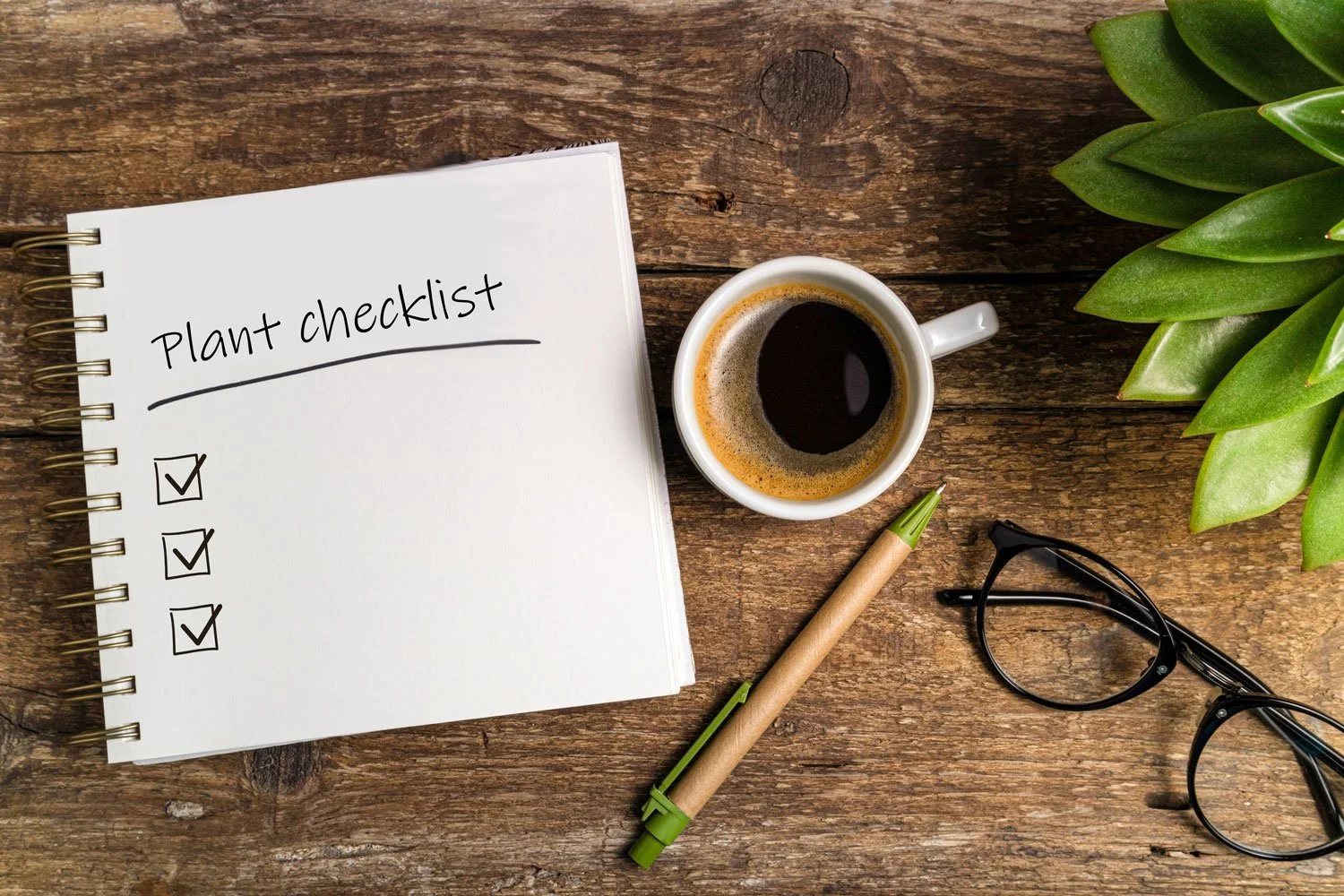I know, I know…we still have a little while to enjoy warm summer days, late sunsets, and meals al fresco. But your houseplants will be forever grateful (and you will be too, by default) if you follow these simple guidelines that will prepare them to happily snuggle in for fall and winter.
Actually, your houseplants are already responding and adjusting as the daylight hours slowly change, because, for them, it is always ALL about the light. This is why our first question, when you come to ask about choosing new houseplants, is about the direction and quality of sunlight they will receive.
Think of September as the “Last Chance” month - the last chance to fertilize and to repot - while October through March is a period of rest for your plants. Here is a checklist of things to do (or to stop doing) to ensure the health and happiness of your houseplants in fall and winter.
Apply fertilizer through the end of the September
Fertilizer is best applied during the “growing months,” which are April through September. This is when the plant is geared to need and use those extra nutrients. October through March is when they “hibernate,” so not only is fertilizing a waste of your time and money but the plant could be harmed by the unused build-up of nutrients in the soil.
Note: there are exceptions, of course. Some plants require a half-dose of fertilizer during the fall and winter months, so make sure to follow the instructions on the plant tag, when you purchase, or to do independent research about your specific plant. Our Indoor Living Team is always available and happy to answer any questions you have when you visit!
Wait to Repot your plant
Repotting after September, when the plant is no longer actively growing, can harm the roots and cause the plant to become water-logged and fail. In this situation, the roots cannot make use of all the moisture that accumulates and sits stored in the new surrounding soil. This creates a potential for root rot, which then invites unwanted insects, fungus, and mold. It also decreases the temperature of the soil, which can also damage fragile roots. So, September is really the last month before spring to get any repotting done if needed. Learn How to Repot a Plant.
Pay Attention to How Often You Need to Water
Watering will need to be adjusted as we move into fall. You will still allow the soil to dry out to the prescribed level of moisture and then water it so the entire root ball is drenched, but you will find the interval between waterings will be longer. And I wish I could say that there are simple rules like “your weekly watering will switch to bi-monthly watering,” but there is no formula that applies to all plants in all situations. As always, plant parenting is all about paying attention and trial and error.
Prune Your Plants As Needed
Pruning houseplants is nowhere near as complicated as pruning outdoor landscape plants. Whether it is for shaping, propagating, or general health, I prune mine when they need it, no matter the season. Simple as that. But questions about “where to prune” and “how to prune” come up regularly. There are specific methods and I always find that a visual, hands-on demonstration works the best, so come by and let us show you.
Think About Grow Lights
Indoor grow lights are definitely “a thing” and can be very useful and successful. For instance, if you only have low light from a north- or east-facing window and have become enamored with cacti and succulents that require bright, direct light, grow lights are a must-have.
These are specialized bulbs that simulate the nutritional rays from the sun without emitting the harmful heat of our traditional incandescent and LED lights. They now come in many shapes, styles, and wattage, so you will need to do some research and experimentation. They do cost a bit more and do not last as long as our traditional house lights, but, if you take this final step, you will be rewarded with plants that will continue to flourish during our shorter and darker days.
We have several styles that we can show you and we also have people on our Indoor Living Team who have been thrilled with the results of grow lights, so please come in and inquire.
Check out our Indoor Plant Guide for more articles on choosing and caring for your plants and, if you have questions, stop by or email us. We’re happy to help!



